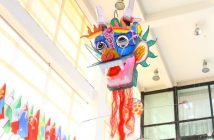
Although we have not yet seen Beijing being covered in beautiful silver this winter, tomorrow marks the beginning of daxue 大雪, the “Heavy Snow” in the Chinese seasonal calendar.
Daxue is one of the agricultural "solar terms" based on climate and astrology which divide a year into 24 periods, allowing farmers to plant and harvest accordingly. As its name indicates, daxue indicates up-coming heavy snowfall, and most of the country will soon fall below 0°C. This 15-day period was very important to farmers in the past because the nitrogen in the snow is essential for the next year’s harvest.
Although modern agriculture relies less on solar terms, chefs and nutritionists still use them as a reference to select the best seasonal bites. The following are some of the top vegetables for this period and some of the dishes you can order at restaurants over the next 15 days.

Cabbage 白菜
In the past, the arrival of winter in the capital meant one thing to all Beijingers: storing up cabbage. It is the only vegetable that could sustain the coldness of the whole winter. Housewives all had to learn how to cook and preserve cabbage, and you will lose count trying to list the different ways of preparing the vegetable. The high levels of vitamin C and E in cabbage can also protect our skin from the dehydration brought about by a dry winter. Next time you’re at a restaurant, why not try ordering tangcu baicai (sour and sweet fried cabbage糖醋白菜), baicai zhurou shuijiao (cabbage and pork dumplings 猪肉白菜水饺) or baicai dundoufu (cabbage and tofu stew白菜炖豆腐).

Red cherry radish樱桃萝卜
This fast-growing and colorful root vegetable is high in calcium and vitamins. Radish is regarded as a healthy vegetable in cold weather, immortalized in the Chinese idiom: “eat radish in winter and ginger in summer, you will not need a prescription from the doctor”. Radish, which contains amylase, can also aid digestion in winter as the body’s metabolism slows down. Red cherry radish is best to eat raw, including its leaves, and local people usually enjoy with sauce or preserve the vegetable with salt, lemon juice, sugar, and vinegar. Ordering liangban yingtao luobo (cherry radish salad 凉拌樱桃萝卜) as a restaurant appetizer can be a healthy and delicious option.

Green Chinese onion 大葱
Dacong, or green Chinese onion, has a very strong yang nature according to Traditional Chinese Medicine (TCM), and compliments winter’s coldness, which has a yin nature. Its warming properties are believed to help cure fevers, runny noses, and headaches accompanying common colds. Besides these medicinal properties, it is also one of the most flavorsome ingredients for Chinese chefs to liven up their dishes. You can find dacong as an ingredient in zhuroudacong shuijiao (dumpling and dacong dumpling 猪肉大葱水饺), gongbao jiding (kungpao chicken宫保鸡丁) and congbao yangrou (fried mutton with dacong 葱爆羊肉).
Photos by mhaller1979, benchilada, uglyagnes and food_in_mouth (Flickr)



